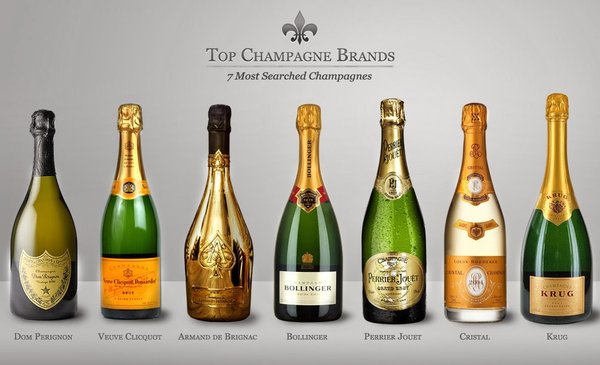
Is there anything more paradoxical than Champagne? Often mistaken as a product or category, Champagne is neither.
It is a region from which a combination of grapes, usually chardonnay, pinot noir and pinot meunier, are blended. Despite representing one of the world’s most luxurious wines, it comes from an austere region of Northern France where vines struggle in the cold climate. Many of us would have difficulty naming half a dozen brands of Champagne, yet there are more than 15,000 separate producers.
Perhaps most paradoxical of all, despite the downturn in the global consumption of French wines, Champagne has never been more popular. In 2007 sales surged by 10% and Brits drank about one bottle in every eight. It was in the fall of 06′ that provided a stark reminder of the continued success and beguiling nature of this wonderful drink.
At the top end, Pernod Ricard was unveiling the world’s most expensive champagne. The addition to its Perrier-Jouet Belle Epoque range would sell for EUR1000 (about £670). Chairman Patrick Ricard informed shareholders that the champagne would be made in ‘very limited quantities’ and marketed only in China, Russia and the US. While the company would realise fabulous margins, this was very much a brand move and not one driven by the bottom line.
Despite a strong heritage and reputation, the house of Perrier-Jouet is in the shade of many of its more luxurious, notorious and expensive rival brands. The super-premium launch was intended to attract editorial coverage and snare some of the ultra-rich alpha consumers who influence the Champagne preferences of the masses. It was also designed to help Perrier-Jouet negotiate an age-old problem for all Champagnes: scarcity, or rather the lack thereof.
Despite all its allusions to exclusivity, Champagne is relatively commonplace: more than 300m bottles will be consumed this year. The problem for its producers is how to communicate scarcity while still selling millions of bottles of the stuff.
The answer lies in brand architecture. Perrier-Jouet uses its super-exclusive Champagne to build its brand, while making most of its sales and profits from its standard, mass-produced champagnes.
At the other end of the spectrum, you could buy 45 bottles of Marks & Spencer Champagne for the same price as a single bottle of the new Belle Epoque. According to Egon Ronay, that might not be a bad idea: in a blind tasting, he found many supermarket Champagnes were better than some of the best-known labels, despite costing about £15.
Supermarkets now account for 64% of UK Champagne sales and are using the wine in the exact opposite way to Pernod Ricard. Thanks to economies of scale, very discerning category buyers and a plethora of producers, most UK supermarkets can offer top-class bubbly at very attainable prices. The message that the very best quality can be had at the very lowest prices is one that all supermarkets aspire to, especially during the festive seasons. It is also a great way to attract the millions of bargain-hunters who want to stock up for that prolonged drinking binge commonly known as the Christmas break.
So there you have it. The delightful paradox of Champagne: one company making tiny quantities of it at ridiculously high prices to build its brand, while another achieves the same goal by selling huge amounts at incredibly low prices.
30 SECONDS ON … CHAMPAGNE
– In most countries, the Champagne name is legally protected under the 1891 Treaty of Madrid to mean only sparkling wine produced in its namesake region.
– Appellation d’Origine Controllee rules require that Champagnes cannot be sold until they have aged for at least 15 months; vintage Champagnes must age for at least three years before release.
– Wineries in Champagne account for 32,000 hectares of vineyards and employ more than 10,000 people. Their combined annual revenues total about EUR4.3bn (£2.9bn).
– Producers hold a maturing stock of about 1bn bottles at any time – more than three years of sales volume.
– Champagne is best drunk at a temperature of about 7 degrees C-9 degrees C. There are about 49m bubbles in a regular bottle.
– Sir Winston Churchill was quoted as saying during World War I: ‘Remember gentlemen, it is not just France we are fighting for; it is Champagne!’
The Blake Project Can Help: The Brand Positioning Workshop
Branding Strategy Insider is a service of The Blake Project: A strategic brand consultancy specializing in Brand Research, Brand Strategy, Brand Licensing and Brand Education




